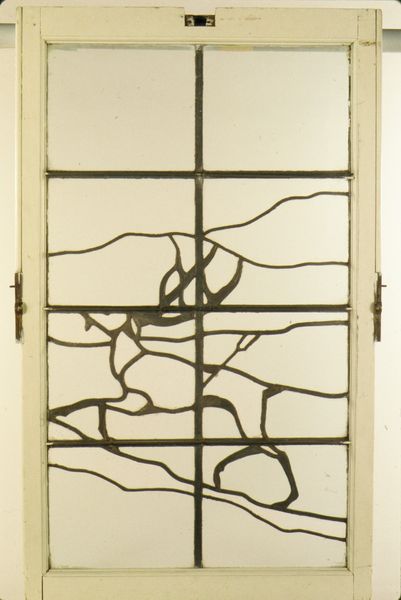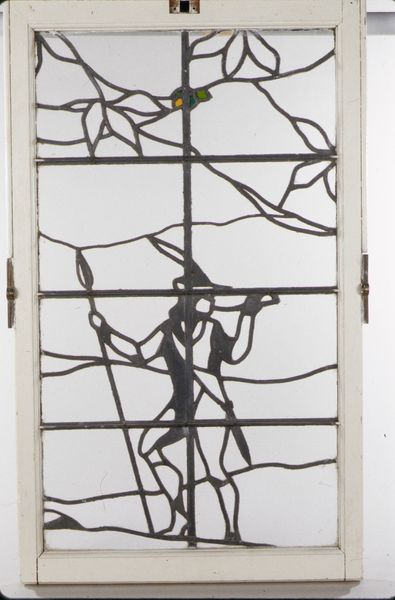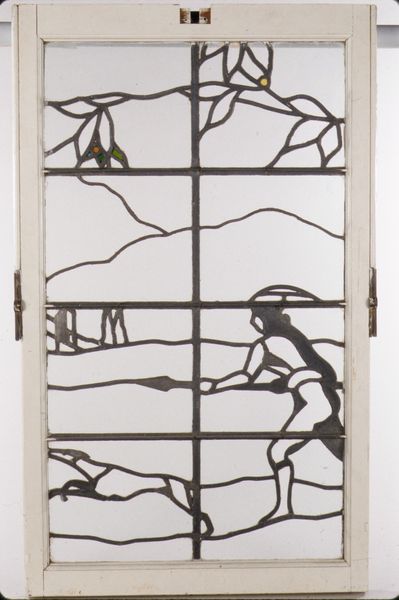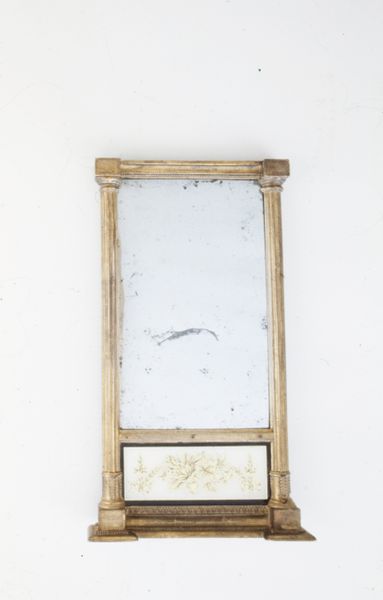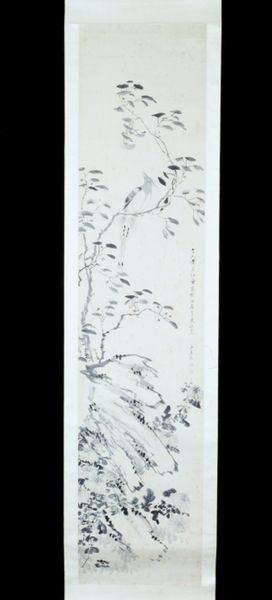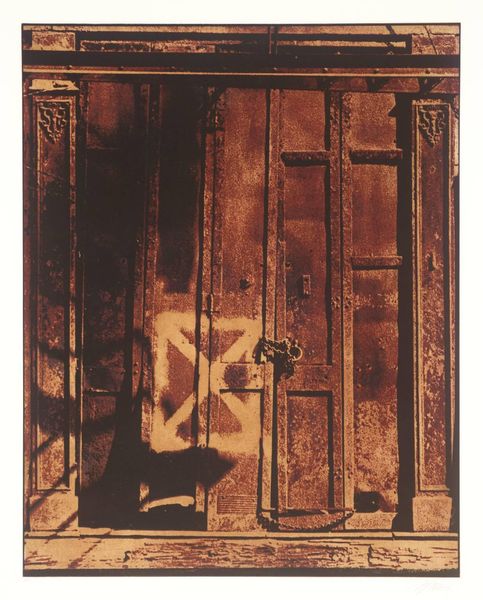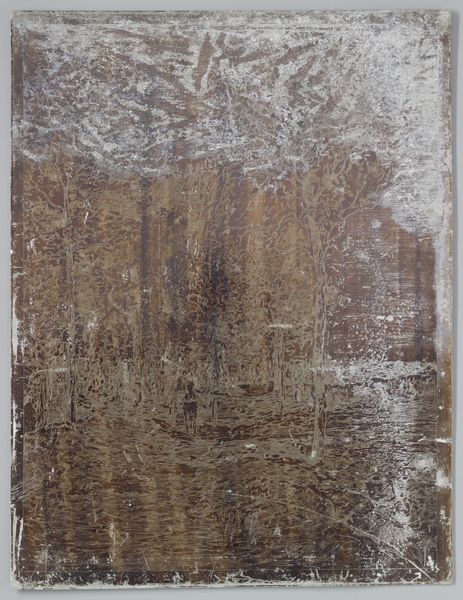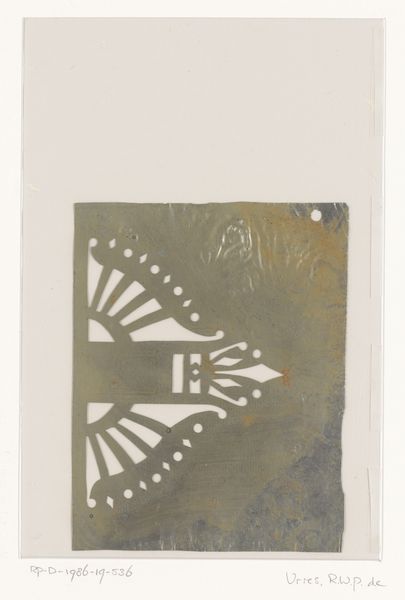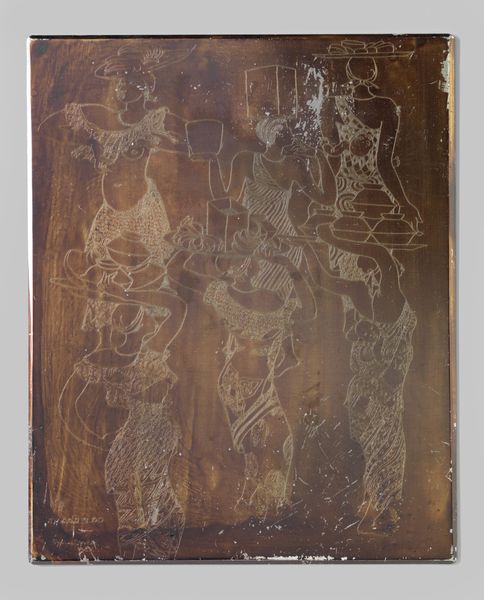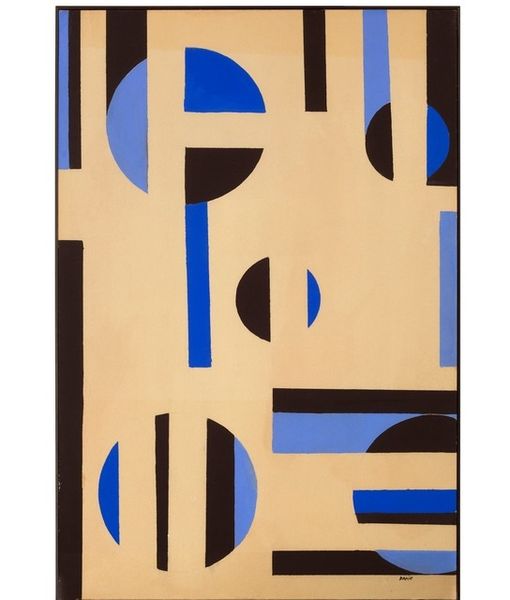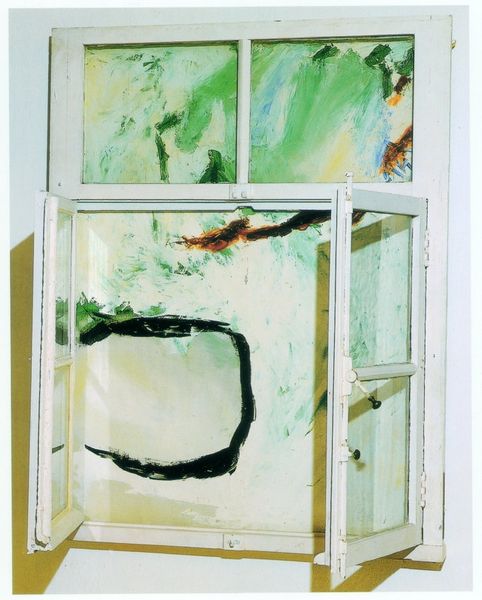
drawing, glass
#
drawing
#
art-nouveau
#
landscape
#
figuration
#
glass
#
line
#
decorative-art
Dimensions: 40 x 24 in. (101.6 x 61 cm)
Copyright: Public Domain
Curator: Welcome. Before us is a "Stained Glass Window" crafted between 1902 and 1905, designed by William Lightfoot Price, an exemplar of the Arts and Crafts movement, residing here at the Metropolitan Museum. Editor: The initial impression is of stark beauty, a quiet scene defined by decisive black lines against a luminous backdrop. It's strangely austere yet also inviting; the figure almost emerges from the stylized landscape, and there's a flatness of color due to the lead divisions that are actually very soothing. Curator: Yes, the dominance of line is key to understanding the composition, a strong feature of Art Nouveau. The lines create both the figurative elements and a decorative schema, playing with flatness and depth within the visual field. The lead work acts almost as a form of drawing in itself. Editor: Right, you can feel the hand in every aspect of it, which links this piece strongly to the Arts and Crafts emphasis on artisanship over mechanization. Each curve and junction displays an individual engagement with the material. How fascinating to think of the skilled labor and physical exertion required to cut and assemble these intricate panes! Curator: Absolutely. Moreover, this stained glass work presents an allegorical dimension, its lines tracing narratives beyond simple representation, perhaps reflecting ideals of pastoral life and human potential within its compositional architecture. Semiotics invite analysis to interpret these figures and natural settings. Editor: Indeed. Also, looking more carefully, one must acknowledge the relative opacity of the white sections: clearly not uniform or perfect materials but a conscious attempt to achieve a light-altering effect in the interior spaces, demonstrating its integral architectural function and effect upon ambient atmosphere. Curator: An excellent point. The material context and interaction are clearly essential for fully appreciating the aesthetic and cultural intent. Editor: Considering the materials then, and all these combined skills of design and labor involved, such glass panel implies not only aesthetic pleasure but also quiet revolution of bringing craftsmanship and the common man at forefront of arts creation! Curator: Indeed, a convergence where formalism elucidates material narrative. Thank you for these perceptive reflections! Editor: And thank you, I found new layers appreciating this dialogue today!
Comments
No comments
Be the first to comment and join the conversation on the ultimate creative platform.
